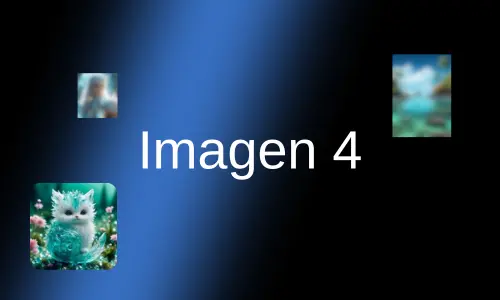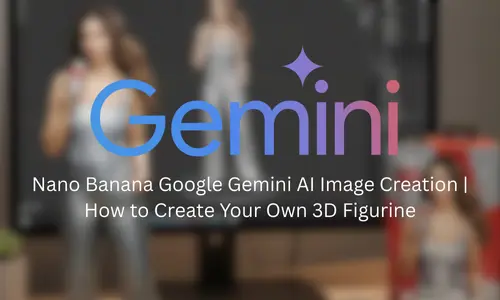Announces Imagen 4: A model for your creative needs in Gemini

Jules Launched by Google | Asynchronous Coding Agent
August 13, 2025
DeepMind Launches Genie 3 | Transforming Text into Immersive 3D Worlds
August 19, 2025Google has taken a bold step forward in the realm of artificial intelligence by introducing Imagen 4, its latest text-to-image generation model tailored to fulfill a wide array of creative demands within the Gemini ecosystem. This innovation promises to transform how users generate visuals, blending cutting-edge technology with user-friendly accessibility. As creators, designers, and everyday enthusiasts seek tools that amplify their imagination, this new model emerges as a game-changer, offering photorealistic outputs at impressive speeds.
Understanding the Evolution of Google’s Image Generation Tools
Google’s journey in AI-driven image creation began with earlier versions of Imagen, each building on the last to refine quality and efficiency. The progression from Imagen 2 to Imagen 3 set high standards, focusing on better understanding of prompts and producing more detailed visuals. Now, with this latest iteration, the company addresses key pain points like generation time and output fidelity, making it suitable for both professionals and hobbyists.
What sets this model apart is its foundation in advanced machine learning techniques. Drawing from vast datasets, it interprets complex textual descriptions to craft images that feel alive and contextually accurate. For instance, users can describe intricate scenes involving multiple elements, and the system delivers cohesive results without the common artifacts seen in older models.
The Technological Backbone Behind the Model
At its core, the model leverages sophisticated neural networks optimized for speed and precision. Reports highlight how it incorporates diffusion-based processes, which iteratively refine noise into structured images, resulting in sharper details and vibrant colors. This approach not only enhances photorealism but also supports a broader range of styles, from hyper-realistic portraits to abstract art.
Engineers at Google DeepMind have emphasized the model’s ability to handle nuanced prompts, such as specifying lighting conditions or emotional tones. This level of control empowers users to iterate quickly, turning vague ideas into polished visuals in mere seconds.
Key Features That Define Imagen 4
One of the standout aspects is its rapid generation capability, often referred to in announcements as “near real-time” performance. Unlike predecessors that might take minutes, this version can produce high-quality images almost instantly, which is crucial for dynamic workflows like content creation or prototyping.
Another feature is the enhanced clarity and resolution. Outputs boast finer details, such as realistic textures on fabrics or subtle shadows in landscapes, making them ideal for professional use. The model also excels in diversity, generating inclusive representations across cultures and scenarios, aligning with Google’s commitment to ethical AI.
Speed and Efficiency Upgrades
The introduction of a “Fast” variant within the family allows for even quicker results without sacrificing much quality. This is particularly beneficial for developers integrating the tool into apps or websites, where latency can impact user experience. Benchmarks show it outperforming competitors in throughput, handling multiple requests efficiently.
Moreover, the system includes safety filters to prevent harmful content generation, ensuring outputs adhere to guidelines. This proactive measure builds trust, especially in educational or enterprise settings.
Versatility in Styles and Outputs
From photorealistic renders to stylized illustrations, the model’s versatility shines through. Users can experiment with prompts that blend genres, like “a futuristic cityscape in the style of a Renaissance painting,” yielding unique hybrids. This flexibility opens doors for artists exploring mixed media or marketers crafting custom visuals.
Seamless Integration with Gemini AI
A major highlight is how this model embeds directly into Gemini, Google’s multifaceted AI assistant. Through the Gemini API, developers can access its capabilities programmatically, enabling custom applications that generate images on demand. For non-technical users, the Google AI Studio offers a no-code interface for testing and deploying ideas swiftly.
This integration means users can combine image generation with other Gemini features, such as text summarization or data analysis. Imagine generating visuals to accompany a report or illustrating concepts in real-time during a brainstorming session—the possibilities enhance productivity across boards.
Availability and Access Options
Currently, the model is available in a paid preview via the API, with limited free testing in AI Studio. This tiered approach allows early adopters to explore its potential while Google refines it based on feedback. Plans for broader rollout, including general availability, suggest it will soon reach a wider audience, possibly through the Gemini app updates.
For those eager to dive in, signing up for the preview involves simple steps: create an account on Google Cloud, enable the API, and start prompting. Tutorials and documentation provide guidance, ensuring even beginners can harness its power.
Practical Applications in Everyday Creativity
Beyond technical specs, the real value lies in its applications. In marketing, teams can rapidly prototype ad visuals, testing variations to find what resonates. Educators might use it to create custom diagrams for lessons, making abstract topics tangible for students.
Graphic designers benefit from its ability to generate base images for further editing in tools like Photoshop, saving hours on initial sketches. Even in entertainment, scriptwriters could visualize scenes, aiding in pitching ideas to producers.
Case Studies from Early Users
Feedback from initial testers reveals transformative impacts. One developer shared how integrating the model into a mobile app sped up user-generated content, boosting engagement. Another artist noted the model’s accuracy in capturing cultural nuances, allowing for authentic representations in global projects.
In e-commerce, businesses are experimenting with product visualizations, generating images of items in different settings to enhance listings. This not only cuts photography costs but also personalizes shopping experiences.
Challenges and Solutions
While powerful, users should note potential limitations, like occasional misinterpretations of ambiguous prompts. To mitigate this, crafting detailed, specific descriptions yields better results. Google continues to iterate, incorporating user input to address these areas.
Comparing Imagen 4 to Competitors
In the competitive landscape of AI image generators, this model holds its own against rivals like DALL-E from OpenAI or Midjourney. It edges out in speed and integration depth, particularly for those already in the Google ecosystem. While DALL-E excels in artistic flair, Google’s offering prioritizes photorealism and ethical safeguards.
Side-by-side tests show superior handling of complex compositions, with fewer errors in anatomy or perspective. For enterprises, the API’s scalability makes it a preferred choice over standalone tools.
Strengths Over Previous Versions
Compared to Imagen 3, the new model offers double the speed and improved prompt adherence. This evolution reflects Google’s ongoing investment in AI, ensuring users stay ahead in creative pursuits.
The Future Outlook for AI-Driven Creativity
Looking ahead, this launch signals broader trends in generative AI. As models like this become more accessible, we can expect surges in innovation across industries, from fashion design to virtual reality. Google hints at future enhancements, possibly including video generation ties with Veo 3 or music via Lyria 2.
Ethical considerations will remain paramount, with ongoing efforts to combat biases and misuse. Community involvement in shaping these tools could lead to more inclusive advancements.
Preparing for What’s Next
For individuals and businesses, adopting such technologies early positions them for success. Investing time in learning prompt engineering or exploring API integrations can unlock untapped potential.
Google’s rollout of this advanced model marks a pivotal moment in democratizing creativity. By providing tools that are fast, reliable, and integrated, it empowers users to bring ideas to life effortlessly. Whether you’re a seasoned creator or just starting, exploring this innovation could redefine your workflow. As AI continues to evolve, staying engaged with updates ensures you harness its full benefits, fostering a world where imagination knows no bounds.


